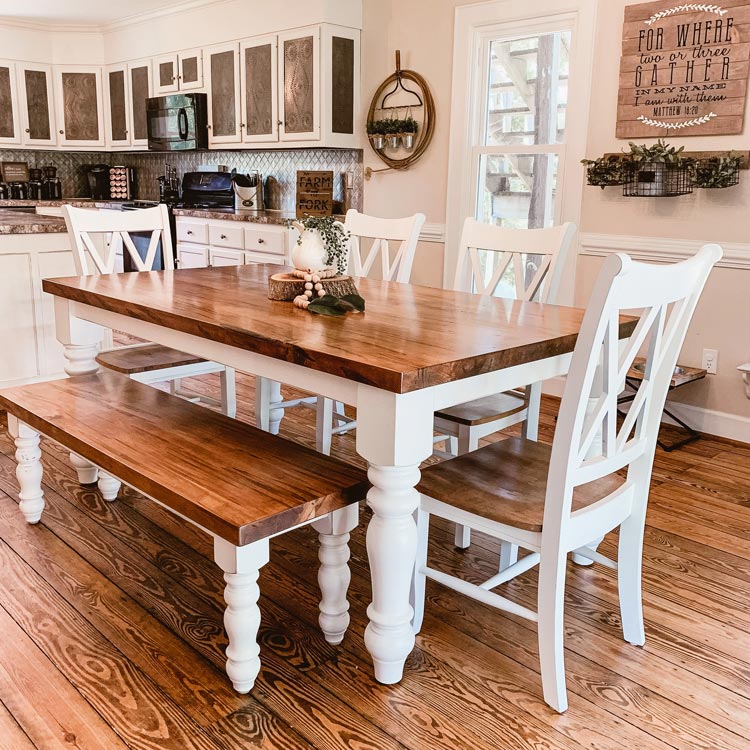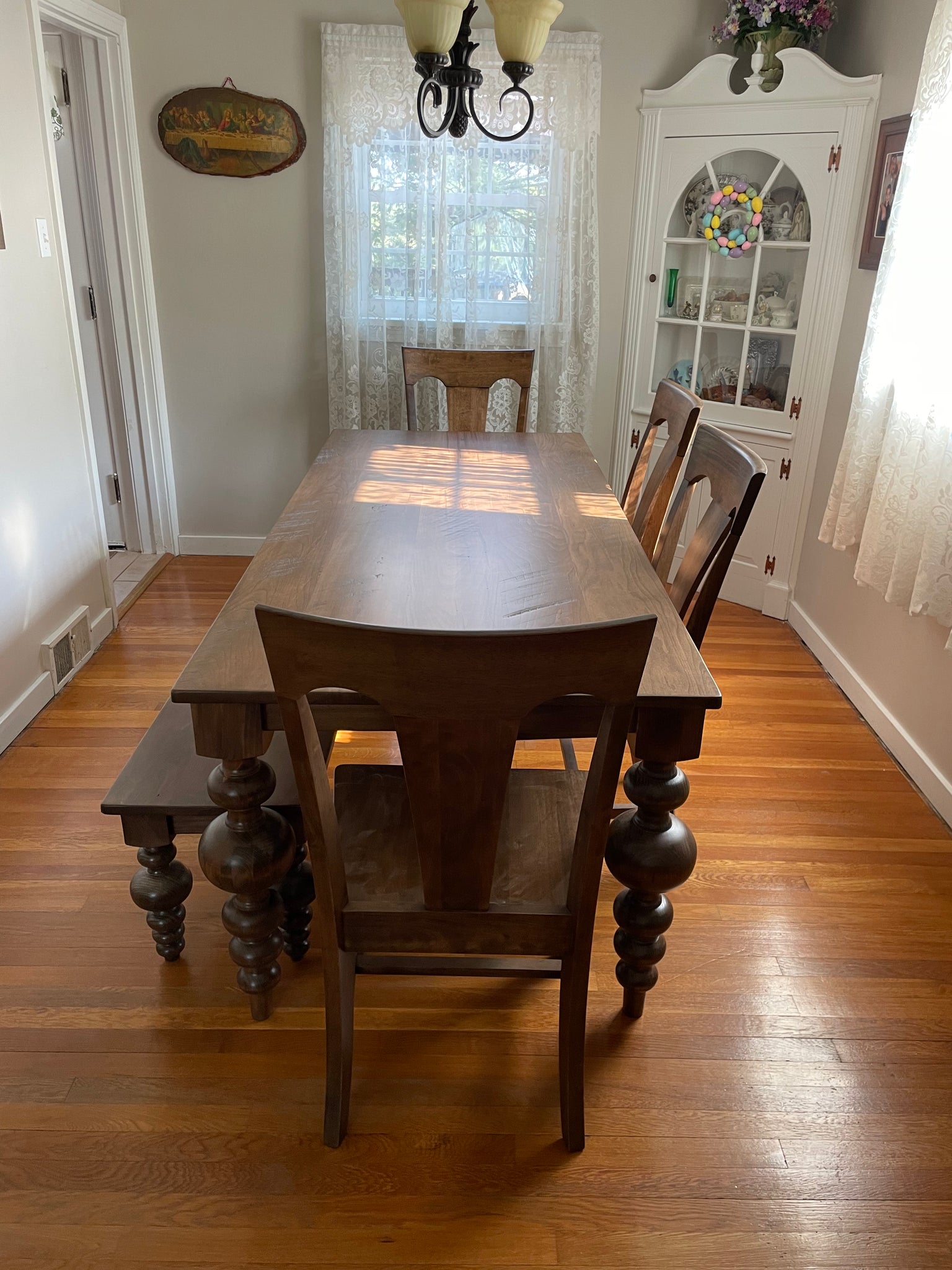The Top Trends in Dining Room Table Legs You Need to Know
The Top Trends in Dining Room Table Legs You Need to Know
Blog Article
Professional Tips for Installing Dining Room Table Legs for Optimum Security
When it pertains to setting up dining-room table legs, achieving optimum stability is critical for both functionality and aesthetic appeals. The process starts with choosing the right products and hardware, adhered to by careful alignment and factor to consider of weight distribution. Each step plays a critical function in ensuring that the ended up product holds up against daily usage without jeopardizing safety or style integrity. Understanding the subtleties of these elements can substantially influence the general outcome. What details strategies can improve stability even better?
Select the Right Legs
When choosing the ideal legs for your dining-room table, it is necessary to think about both capability and visual appeals. The legs you select will dramatically impact the general layout and security of the table. Assess the table's meant use; if you expect regular events, stronger legs, such as those made from solid wood or metal, may be more suitable, as they provide raised resilience and support.
Next, take into consideration the elevation and design of the legs in connection with the tabletop. Common dining tables usually range from 28 to 30 inches in elevation, so guarantee the legs align with this standard for convenience. The design of the legs ought to complement the design of the table top-- whether it be modern, rustic, or traditional. Conical legs can add a modern touch, while transformed legs may convey a more timeless aesthetic.

Select Appropriate Hardware
Exactly how can the appropriate hardware improve the security and longevity of your dining area table? The selection of proper hardware is vital to ensuring that the legs of your table are safely connected and able to hold up against regular use. Top quality screws, screws, and braces offer the necessary stamina to sustain the weight of the table, in addition to any kind of extra tons put upon it throughout celebrations or dishes.
When picking screws, choose for those made from sturdy materials such as stainless-steel or brass, which resist rust and keep integrity over time. The length of the screws is equally important; they ought to pass through deeply right into the table's structure without jeopardizing integrity. For bolted connections, take into consideration making use of lock washing machines to avoid loosening due to resonance or activity.
Additionally, making use of edge brackets can add extra assistance, particularly for bigger tables or those with heavier tops. These brackets distribute weight evenly and help keep the table's shape. Ensuring that the hardware you pick is ideal for the particular products of your table will even more improve its general stability and longevity, enabling you to enjoy your dining experience more tips here for several years to find.
Ensure Correct Positioning
Proper positioning of dining space table legs is important for both aesthetic appeal and functional security. To attain optimal alignment, begin by measuring the range from the table's edges to the leg add-on points.
Make use of a degree during installment to confirm that each leg is perpendicular to the table top. It is a good idea to note the desired leg settings on the bottom of the table with a pencil or masking tape before securing them.
Furthermore, double-check the placement after the initial screws are tightened up, as adjustments might be needed before totally safeguarding the hardware. By focusing on proper positioning, you not just boost the table's general layout but also make sure that it continues to be functional and steady for several years to come.

Consider Weight Circulation
After ensuring correct alignment of the dining area table legs, it is essential to consider weight circulation to boost security and performance. dining room table legs. Appropriate weight circulation is important in protecting against making sure and tottering that the table can support its desired tons without threat of tipping or breaking down
When placing the legs, guarantee they are put at equal ranges from the facility of the table to evenly disperse the weight across the framework. Consider the weight of the tabletop and any type Visit Website of things that will regularly hinge on it, such as tabletop home appliances or ornamental items. Tables with larger surface areas ought to ideally have legs located closer to the corners, as this maximizes the base of support and reduces the danger of instability.
Furthermore, if the table is planned for usage in a high-traffic area, think about utilizing heavier materials for browse around this web-site the legs or including maintaining components, such as cross-bracing or a lower rack - dining room table legs. These adjustments can help maintain equilibrium and protect against changing throughout usage. Eventually, a well-considered weight circulation approach will substantially boost the table's total efficiency, guaranteeing it remains a functional and appealing focal point for your eating area
Test Stability Prior To Use
Testing the security of the eating room table before usage is a crucial action that needs to not be overlooked. Making certain that the table is protected and steady can protect against accidents and extend the lifespan of the furniture. Begin by using gentle stress to different points on the table surface area. Press down on the center and after that along the sides, changing or observing any type of wobbling. Identify the legs or joints that might call for adjustment. if the table shows instability.
Next, examine that all bolts and screws are tightened up properly. Loose connections can bring about instability and possible damage gradually. If required, make use of wood adhesive on joints to enhance stability, making certain to enable sufficient drying out time.

Verdict
In verdict, the installment of eating space table legs calls for mindful consideration of products, weight, hardware, and placement circulation to accomplish optimum stability. By selecting premium fasteners and sturdy legs, guaranteeing specific placement, and dispersing weight evenly, the structural integrity of the table can be substantially improved. Carrying out a stability test before routine usage further ensures that the table will certainly withstand day-to-day stress, thus offering a safe and trusted eating experience.
When it comes to installing dining room table legs, accomplishing optimum security is critical for both capability and looks. The legs you pick will substantially affect the overall design and stability of the table (dining room table legs). Conventional eating tables usually vary from 28 to 30 inches in height, so make sure the legs line up with this requirement for convenience.Appropriate positioning of eating area table legs is essential for both visual charm and practical stability.In final thought, the installation of eating area table legs requires careful consideration of materials, weight, alignment, and hardware circulation to attain maximum stability
Report this page